BAS416 Diode: NXP BAS416, 75V, SOD 323, Datasheet PDF
Standard Diode Rectifier Small Signal =< 200mA (Io), Any Speed 1.25V @ 150mA 150°C Max 5nA @ 75V 2-Termination Tape & Reel (TR) SC-76, SOD-323 Surface Mount
Unit Price: $0.033278
Ext Price: $0.03









Standard Diode Rectifier Small Signal =< 200mA (Io), Any Speed 1.25V @ 150mA 150°C Max 5nA @ 75V 2-Termination Tape & Reel (TR) SC-76, SOD-323 Surface Mount
BAS416 is an epitaxial, medium-speed switching diode. This article covers its datasheet, pinout, application and more details about BAS416.
BAS416 Pinout

BAS416 Pinout
| Pin | Name | Description |
| 1 | CATHODE | not connected |
| 2 | ANODE | output current |
BAS416 CAD Model
Symbol

BAS416 Symbol
Footprint

BAS416 Footprint
3D Model

BAS416 3D Model
BAS416 Description
BAS416 is an epitaxial, medium-speed switching diode with a low leakage current encapsulated in a small SOD323 SMD plastic package.
BAS416 Feature
• Plastic SMD package
• Low leakage current: typ. 3 pA
• Switching time: typ. 0.8 µs
• Continuous reverse voltage: max. 75 V
• Repetitive peak reverse voltage: max. 85 V
• Repetitive peak forward current: max. 500 mA
BAS416 Application
Low-leakage current applications in surface-mounted circuits
BAS416 Alternatives
BAS416 Test Circuit
The following figure shows the BAS416 test circuit:

BAS416 Reverse Recovery Voltage Test Circuit and Waveforms
Specifications
- TypeParameter
- Factory Lead Time4 Weeks
- Mounting Type
The "Mounting Type" in electronic components refers to the method used to attach or connect a component to a circuit board or other substrate, such as through-hole, surface-mount, or panel mount.
Surface Mount - Package / Case
refers to the protective housing that encases an electronic component, providing mechanical support, electrical connections, and thermal management.
SC-76, SOD-323 - Surface Mount
having leads that are designed to be soldered on the side of a circuit board that the body of the component is mounted on.
YES - Number of Pins2
- Diode Element Material
The parameter "Diode Element Material" refers to the specific semiconductor material used in the construction of a diode. This material determines the electrical characteristics and performance of the diode, including its forward voltage drop, reverse breakdown voltage, and switching speed. Common diode element materials include silicon, germanium, and gallium arsenide, each offering different advantages for various applications. The choice of material impacts the diode's efficiency, thermal stability, and overall suitability for specific electronic circuits.
SILICON - Number of Elements1
- Operating Temperature (Max.)150°C
- Packaging
Semiconductor package is a carrier / shell used to contain and cover one or more semiconductor components or integrated circuits. The material of the shell can be metal, plastic, glass or ceramic.
Tape & Reel (TR) - Published2003
- JESD-609 Code
The "JESD-609 Code" in electronic components refers to a standardized marking code that indicates the lead-free solder composition and finish of electronic components for compliance with environmental regulations.
e3 - Part Status
Parts can have many statuses as they progress through the configuration, analysis, review, and approval stages.
Active - Moisture Sensitivity Level (MSL)
Moisture Sensitivity Level (MSL) is a standardized rating that indicates the susceptibility of electronic components, particularly semiconductors, to moisture-induced damage during storage and the soldering process, defining the allowable exposure time to ambient conditions before they require special handling or baking to prevent failures
1 (Unlimited) - Number of Terminations2
- ECCN Code
An ECCN (Export Control Classification Number) is an alphanumeric code used by the U.S. Bureau of Industry and Security to identify and categorize electronic components and other dual-use items that may require an export license based on their technical characteristics and potential for military use.
EAR99 - Terminal Finish
Terminal Finish refers to the surface treatment applied to the terminals or leads of electronic components to enhance their performance and longevity. It can improve solderability, corrosion resistance, and overall reliability of the connection in electronic assemblies. Common finishes include nickel, gold, and tin, each possessing distinct properties suitable for various applications. The choice of terminal finish can significantly impact the durability and effectiveness of electronic devices.
Tin (Sn) - HTS Code
HTS (Harmonized Tariff Schedule) codes are product classification codes between 8-1 digits. The first six digits are an HS code, and the countries of import assign the subsequent digits to provide additional classification. U.S. HTS codes are 1 digits and are administered by the U.S. International Trade Commission.
8541.10.00.70 - Terminal Position
In electronic components, the term "Terminal Position" refers to the physical location of the connection points on the component where external electrical connections can be made. These connection points, known as terminals, are typically used to attach wires, leads, or other components to the main body of the electronic component. The terminal position is important for ensuring proper connectivity and functionality of the component within a circuit. It is often specified in technical datasheets or component specifications to help designers and engineers understand how to properly integrate the component into their circuit designs.
DUAL - Terminal Form
Occurring at or forming the end of a series, succession, or the like; closing; concluding.
GULL WING - Peak Reflow Temperature (Cel)
Peak Reflow Temperature (Cel) is a parameter that specifies the maximum temperature at which an electronic component can be exposed during the reflow soldering process. Reflow soldering is a common method used to attach electronic components to a circuit board. The Peak Reflow Temperature is crucial because it ensures that the component is not damaged or degraded during the soldering process. Exceeding the specified Peak Reflow Temperature can lead to issues such as component failure, reduced performance, or even permanent damage to the component. It is important for manufacturers and assemblers to adhere to the recommended Peak Reflow Temperature to ensure the reliability and functionality of the electronic components.
260 - Time@Peak Reflow Temperature-Max (s)
Time@Peak Reflow Temperature-Max (s) refers to the maximum duration that an electronic component can be exposed to the peak reflow temperature during the soldering process, which is crucial for ensuring reliable solder joint formation without damaging the component.
40 - Base Part Number
The "Base Part Number" (BPN) in electronic components serves a similar purpose to the "Base Product Number." It refers to the primary identifier for a component that captures the essential characteristics shared by a group of similar components. The BPN provides a fundamental way to reference a family or series of components without specifying all the variations and specific details.
BAS416 - Pin Count
a count of all of the component leads (or pins)
2 - Qualification Status
An indicator of formal certification of qualifications.
Not Qualified - Configuration
The parameter "Configuration" in electronic components refers to the specific arrangement or setup of the components within a circuit or system. It encompasses how individual elements are interconnected and their physical layout. Configuration can affect the functionality, performance, and efficiency of the electronic system, and may influence factors such as signal flow, impedance, and power distribution. Understanding the configuration is essential for design, troubleshooting, and optimizing electronic devices.
SINGLE - Speed
In electronic components, "Speed" typically refers to the rate at which data can be processed or transferred within the component. It is a measure of how quickly the component can perform its functions, such as executing instructions or transmitting signals. Speed is often specified in terms of frequency, such as clock speed in processors or data transfer rate in memory modules. Higher speed components can perform tasks more quickly, leading to improved overall performance in electronic devices. It is an important parameter to consider when designing or selecting electronic components for specific applications.
Small Signal =< 200mA (Io), Any Speed - Diode Type
In electronic components, the parameter "Diode Type" refers to the specific type or configuration of a diode, which is a semiconductor device that allows current to flow in one direction only. There are various types of diodes, each designed for specific applications and functions. Common diode types include rectifier diodes, zener diodes, light-emitting diodes (LEDs), and Schottky diodes, among others. The diode type determines the diode's characteristics, such as forward voltage drop, reverse breakdown voltage, and maximum current rating, making it crucial for selecting the right diode for a particular circuit or application. Understanding the diode type is essential for ensuring proper functionality and performance in electronic circuits.
Standard - Current - Reverse Leakage @ Vr
Current - Reverse Leakage @ Vr is a parameter that describes the amount of current that flows in the reverse direction through a diode or other semiconductor component when a reverse voltage (Vr) is applied across it. This leakage current is typically very small, but it is important to consider in electronic circuits as it can affect the overall performance and reliability of the component. The reverse leakage current is influenced by factors such as the material properties of the semiconductor, temperature, and the magnitude of the reverse voltage applied. Manufacturers provide this parameter in datasheets to help engineers and designers understand the behavior of the component in reverse bias conditions.
5nA @ 75V - Voltage - Forward (Vf) (Max) @ If
The parameter "Voltage - Forward (Vf) (Max) @ If" refers to the maximum voltage drop across a diode when it is forward-biased and conducting a specified forward current (If). It indicates the maximum potential difference the diode can withstand while allowing current to flow in the forward direction without breaking down. This value is crucial for designing circuits as it helps determine how much voltage will be lost across the diode during operation. Higher Vf values can lead to reduced efficiency in power applications, making this parameter essential for optimizing circuit performance.
1.25V @ 150mA - Forward Current
Current which flows upon application of forward voltage.
200mA - Operating Temperature - Junction
Operating Temperature - Junction refers to the maximum temperature at which the junction of an electronic component can safely operate without causing damage or performance degradation. This parameter is crucial for determining the reliability and longevity of the component, as excessive heat can lead to thermal stress and failure. Manufacturers specify the operating temperature range to ensure that the component functions within safe limits under normal operating conditions. It is important for designers and engineers to consider the operating temperature - junction when selecting and using electronic components to prevent overheating and ensure optimal performance.
150°C Max - Voltage - DC Reverse (Vr) (Max)
Voltage - DC Reverse (Vr) (Max) is a parameter in electronic components that specifies the maximum reverse voltage that the component can withstand without breaking down. This parameter is crucial for components like diodes and transistors that are often subjected to reverse voltage during operation. Exceeding the maximum reverse voltage can lead to the component failing or getting damaged. Designers need to consider this parameter when selecting components to ensure the reliability and longevity of their circuits.
75V - Current - Average Rectified (Io)
The parameter "Current - Average Rectified (Io)" in electronic components refers to the average value of the rectified current flowing through the component. This parameter is important in determining the average power dissipation and thermal considerations of the component. It is typically specified in datasheets for diodes, rectifiers, and other components that handle alternating current (AC) and convert it to direct current (DC). Understanding the average rectified current helps in selecting the appropriate component for a given application to ensure reliable operation and prevent overheating.
200mA DC - Reverse Recovery Time
Reverse Recovery Time is a key parameter in semiconductor devices, particularly diodes and transistors. It refers to the time taken for a diode or transistor to switch from conducting in the forward direction to blocking in the reverse direction when the polarity of the voltage across the device is reversed. This parameter is crucial in applications where fast switching speeds are required, as a shorter reverse recovery time allows for quicker response times and improved efficiency. Reverse Recovery Time is typically specified in datasheets for electronic components and is an important consideration in circuit design to ensure optimal performance and reliability.
3μs - Rep Pk Reverse Voltage-Max
Rep Pk Reverse Voltage-Max refers to the maximum reverse voltage that an electronic component, such as a diode, can withstand during a specified period of time without failing. This parameter is crucial in determining the safe operating limits of components in circuits where reverse voltage conditions may occur. Exceeding this value can lead to breakdown or permanent damage to the component. It is typically expressed in volts and is a key specification in signal and power applications.
85V - Capacitance @ Vr, F
Capacitance @ Vr, F refers to the capacitance value of a capacitor measured at a specified rated voltage (Vr). It indicates how much electrical charge the capacitor can store per volt when subjected to this voltage. This parameter is essential for understanding the behavior of capacitors in circuits, particularly under different voltage conditions, and ensures that the component operates within its safe limits. The unit of measurement is Farads (F), which quantifies the capacitor's ability to hold an electrical charge.
2pF @ 0V 1MHz - RoHS Status
RoHS means “Restriction of Certain Hazardous Substances” in the “Hazardous Substances Directive” in electrical and electronic equipment.
ROHS3 Compliant
Parts with Similar Specs
- ImagePart NumberManufacturerPackage / CaseCurrent - Average Rectified (Io)Reverse Recovery TimeRoHS StatusMoisture Sensitivity Level (MSL)Voltage - Forward (Vf) (Max) @ IfDiode Element MaterialMounting TypeView Compare
BAS416,115
SC-76, SOD-323
200mA (DC)
3μs
ROHS3 Compliant
1 (Unlimited)
1.25V @ 150mA
SILICON
Surface Mount
SOD-123
215mA (DC)
3 μs
ROHS3 Compliant
1 (Unlimited)
1.25V @ 150mA
SILICON
Surface Mount
0402 (1006 Metric)
215mA (DC)
3 μs
ROHS3 Compliant
1 (Unlimited)
1.25V @ 150mA
SILICON
Surface Mount
TO-236-3, SC-59, SOT-23-3
250mA (DC)
6 ns
ROHS3 Compliant
1 (Unlimited)
1.25V @ 150mA
SILICON
Surface Mount
BAS416 Dimensions

BAS416 Dimension
BAS416 Manufacturer
Nexperia is a dedicated global leader in Discretes, Logic and MOSFETs devices. This new company became independent at the beginning of 2017. Focused on efficiency, Nexperia produces consistently reliable semiconductor components at a high volume: 85 billion annually. The company’s extensive portfolio meets the stringent standards set by the Automotive industry. And industry-leading small packages, produced in their own manufacturing facilities, combine power and thermal efficiency with best-in-class quality levels. Built on over half a century of expertise, Nexperia has 11,000 employees across Asia, Europe and the U.S. supporting customers globally.
Datasheet PDF
- PCN Packaging :
- Datasheets :
- PCN Design/Specification :
- ReachStatement :
- PCN Assembly/Origin :
Trend Analysis
What is diode switching characteristics?
The switching diode behaves as a short-circuited for an instance in the reverse direction. The minority carriers will cross the junction and conduct the current, which is called as Reverse Saturation Current. ... Before t1 diode is under steady-state forward bias condition
What is diode switching times?
• Switching Time of a diode is the time it takes to switch the diode between two. states (ON and OFF states). • Assume R S is large enough that all current flows through the diode in forwarding bias. conditions.
 A Comprehensive Guide to ABLIC S-1702RBF00-I6T1U Voltage Regulator
A Comprehensive Guide to ABLIC S-1702RBF00-I6T1U Voltage Regulator07 March 2024169
![CR1632 VS CR2032[Video+FAQ]: Comparison between the features, specification, and application.](https://res.utmel.com/Images/Article/e147a90b-a08b-4b42-b2a9-341f614beadb.jpg) CR1632 VS CR2032[Video+FAQ]: Comparison between the features, specification, and application.
CR1632 VS CR2032[Video+FAQ]: Comparison between the features, specification, and application.22 February 202231799
 PIC16F876 Microcontroller: Features, Pinout, and Datasheet
PIC16F876 Microcontroller: Features, Pinout, and Datasheet23 November 20216844
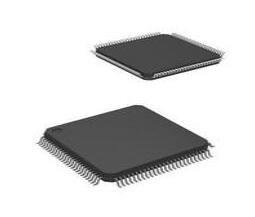 FT900 Embedded Microcontroller: Datasheet, Application, Pinout
FT900 Embedded Microcontroller: Datasheet, Application, Pinout03 August 20211780
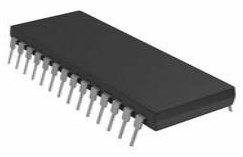 AS6C62256 CMOS SRAM: Features, Pinout and Datasheet
AS6C62256 CMOS SRAM: Features, Pinout and Datasheet24 February 20223670
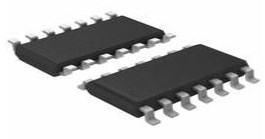 74HC86 Exculsive or Gates : Pinout, Application and Datasheet
74HC86 Exculsive or Gates : Pinout, Application and Datasheet13 July 20215425
 IRF840 N-Channel Power MOSFET: Pinout, Alternative, Test Circuit
IRF840 N-Channel Power MOSFET: Pinout, Alternative, Test Circuit03 August 202111070
![What you need to know about the use of the BS250 P-Channel MOSFET[FAQ]](https://res.utmel.com/Images/Article/a9cca941-e618-4ad6-ae31-15bcc55bff75.jpg) What you need to know about the use of the BS250 P-Channel MOSFET[FAQ]
What you need to know about the use of the BS250 P-Channel MOSFET[FAQ]31 March 20223838
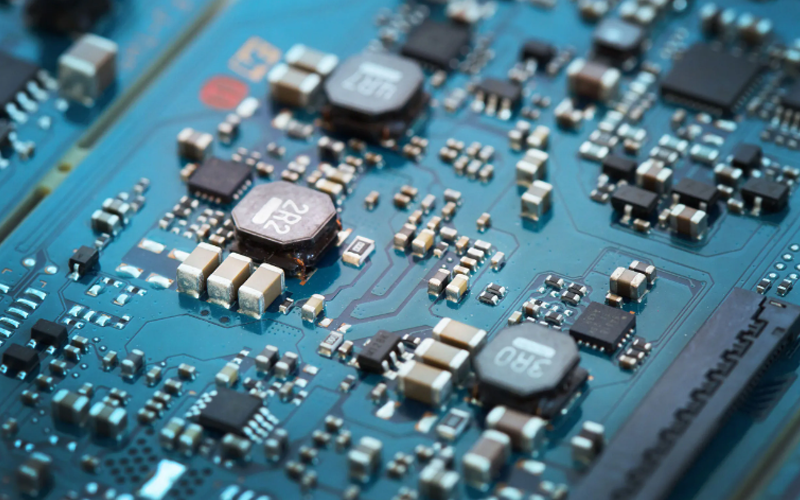 Efficiency-Related Issues in GaN and SiC Power Systems
Efficiency-Related Issues in GaN and SiC Power Systems06 February 20231950
 What is Keyboard and How to Choose It?
What is Keyboard and How to Choose It?17 February 20224807
 What Determines the Maximum Operating Frequency of a Diode?
What Determines the Maximum Operating Frequency of a Diode?29 June 202211313
 Introduction to Types of Diodes
Introduction to Types of Diodes20 October 202514597
 Commonly Used Sensitive Resistor Type Foundation and Circuit Application
Commonly Used Sensitive Resistor Type Foundation and Circuit Application16 December 20212964
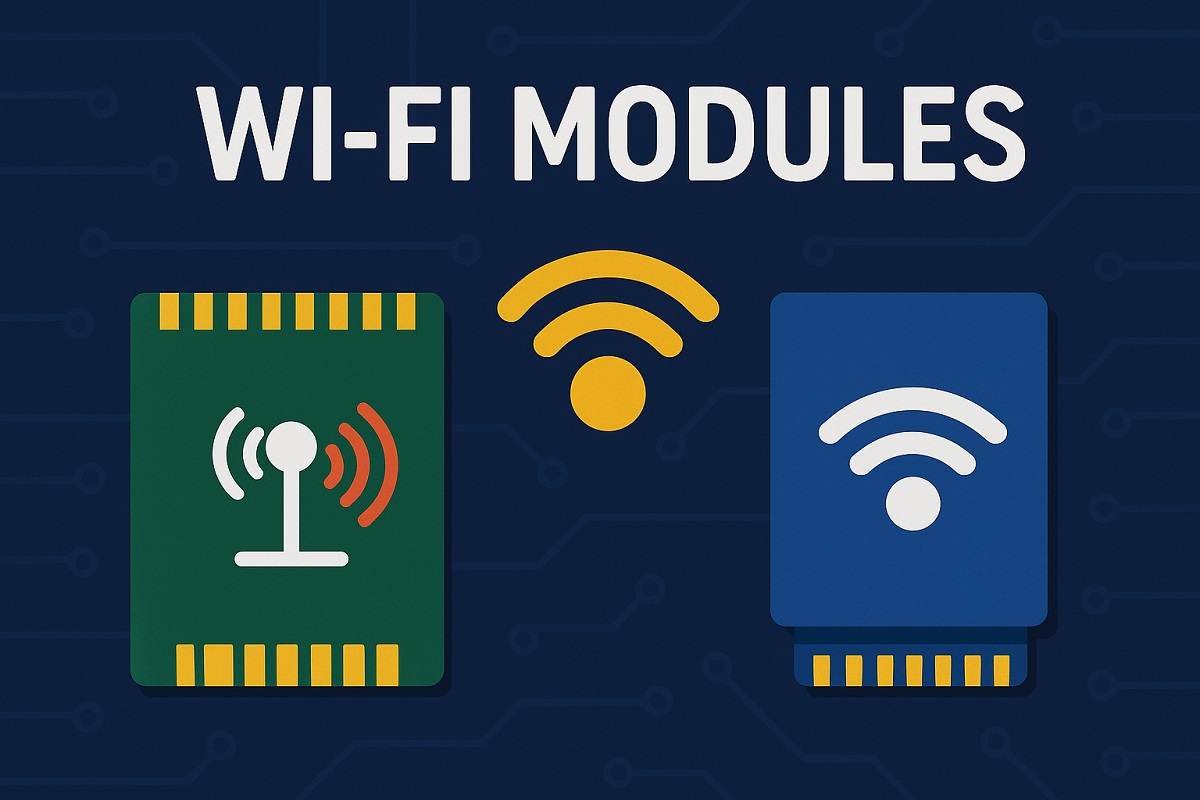 What Are Wi-Fi Modules and Their Uses in IoT Today
What Are Wi-Fi Modules and Their Uses in IoT Today04 June 2025635
 Analysis of SiP (System in Package)
Analysis of SiP (System in Package)12 January 20225876
 Everything You Need to Know about NVMe
Everything You Need to Know about NVMe04 August 20214644
Nexperia USA Inc.
In Stock: 24379
Minimum: 1 Multiples: 1
Qty
Unit Price
Ext Price
1
$0.033278
$0.03
10
$0.031394
$0.31
100
$0.029617
$2.96
500
$0.027941
$13.97
1000
$0.026359
$26.36
Not the price you want? Send RFQ Now and we'll contact you ASAP.
Inquire for More Quantity












